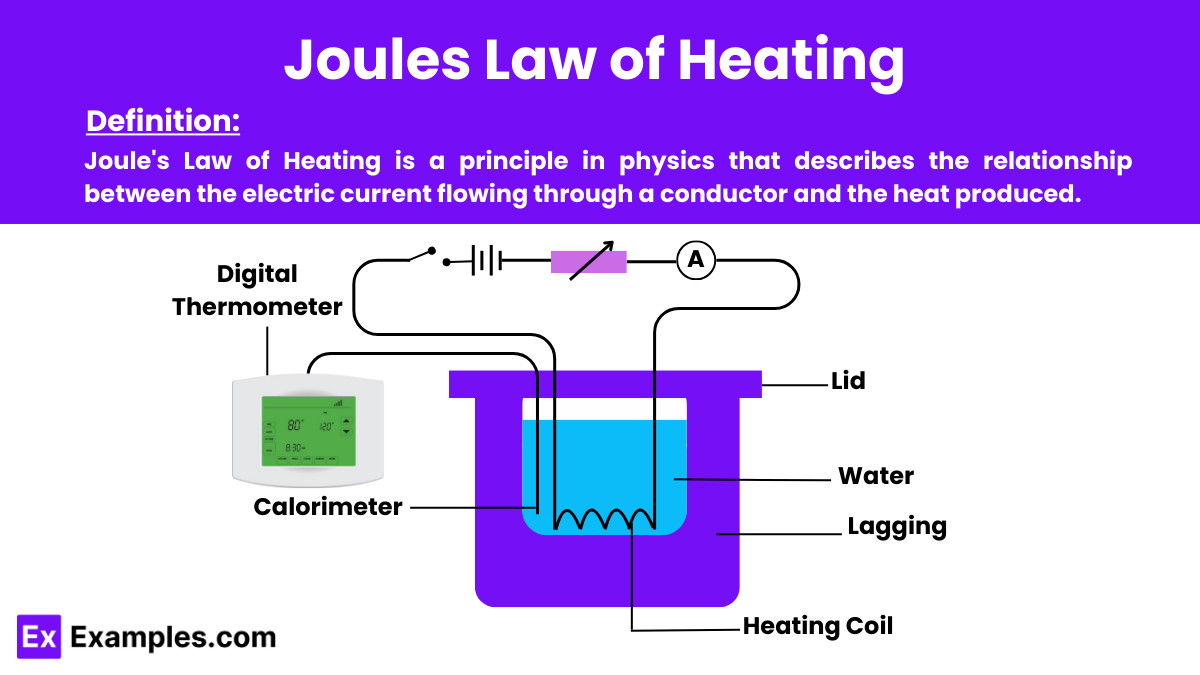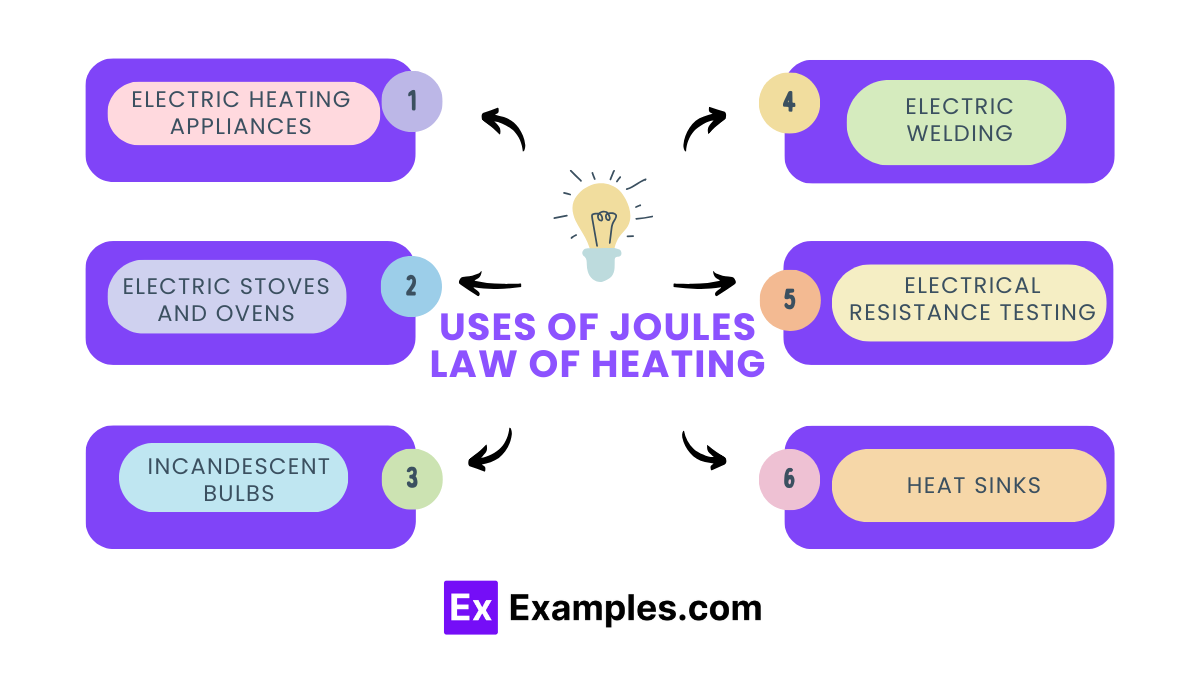What is the formula for Joule's Law of Heating?
P = IV
H = I²Rt
E = mcΔT
F = ma


Joule’s Law of Heating is a principle in physics that describes the relationship between the electric current flowing through a conductor and the heat produced.
The formula for Joule’s Law of Heating describes the heat generated in a conductor due to an electric current flowing through it. The formula is:
where:
This formula illustrates that the heat produced in the conductor is directly proportional to the square of the current, the resistance, and the time for which the current flows.
Let’s derive it step-by-step:
Electric Power: The power 𝑃 dissipated in a resistor is given by: 𝑃=𝐼²𝑅
Heat Energy: Heat energy (𝑄) is the power dissipated over time. So, the heat energy generated in time 𝑡t is: 𝑄=𝑃×𝑡 Substituting the power equation 𝑃=𝐼²𝑅 into this: 𝑄=𝐼²𝑅𝑡
This equation indicates that the heat produced is directly proportional to the square of the current, the resistance of the conductor, and the time the current flows.

This Theory states that heat results from energy conversion due to the movement of particles. Additionally, it describes how electric currents produce heat in conductors.
The SI unit of heat is the joule (J), which measures the energy transfer from one body to another, indicating the work needed to generate the heat.
James Prescott Joule formulated Joule’s Law of Heating in the 19th century, pioneering the understanding of heat generated by electrical currents flowing through conductors.
Text prompt
Add Tone
10 Examples of Public speaking
20 Examples of Gas lighting
What is the formula for Joule's Law of Heating?
P = IV
H = I²Rt
E = mcΔT
F = ma
In Joule's Law of Heating, what does 'H' represent?
Heat energy
Current
Resistance
Voltage
What does 'I' stand for in the equation H = I²Rt?
Impedance
Current
Inductance
Voltage
How does the heat produced change if the current is doubled, according to Joule\'s Law?
It doubles
It halves
It quadruples
It remains the same
In the equation H = I²Rt, what does 'R' represent?
Resistance
Reactance
Power
Energy
If the resistance in a circuit is increased, what happens to the heat produced, assuming constant current?
It decreases
It remains the same
It increases
It becomes zero
How is time (t) related to the heat produced in Joule's Law?
Inversely proportional
Unrelated
Exponentially related
Directly proportional
What unit is used to measure the heat energy (H) in Joule\'s Law?
Joule
Watt
Volt
Ampere
If the current flowing through a resistor is 5 A and the resistance is 2 Ω, how much heat is produced in 10 seconds?
500 J
250 J
100 J
50 J
What physical principle does Joule\'s Law of Heating illustrate?
Conservation of mass
Conservation of energy
Newton\'s Third Law
Electromagnetic induction
Before you leave, take our quick quiz to enhance your learning!

